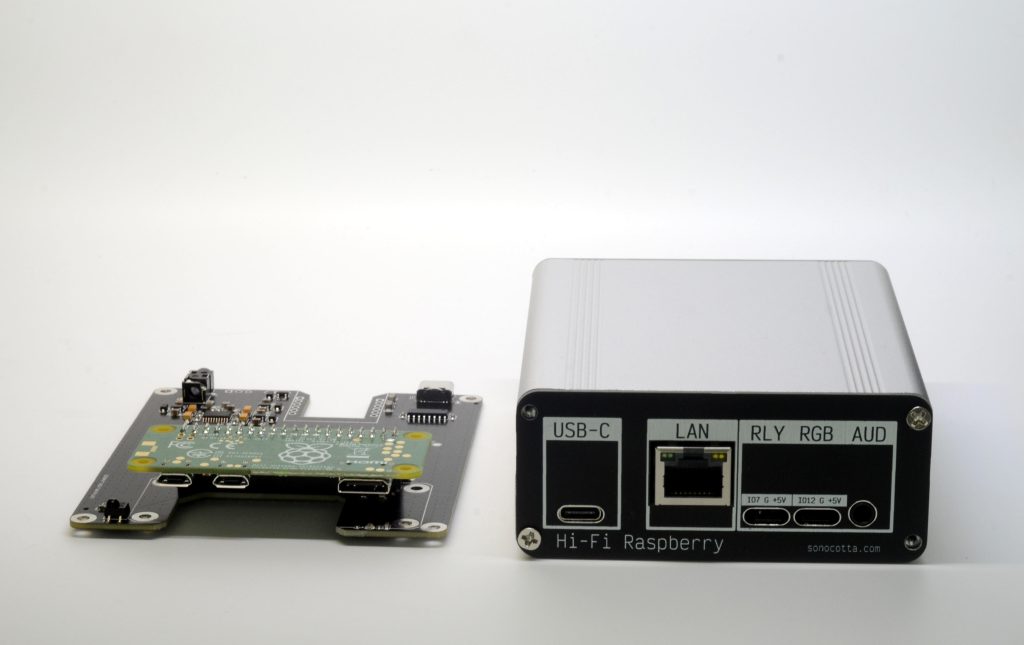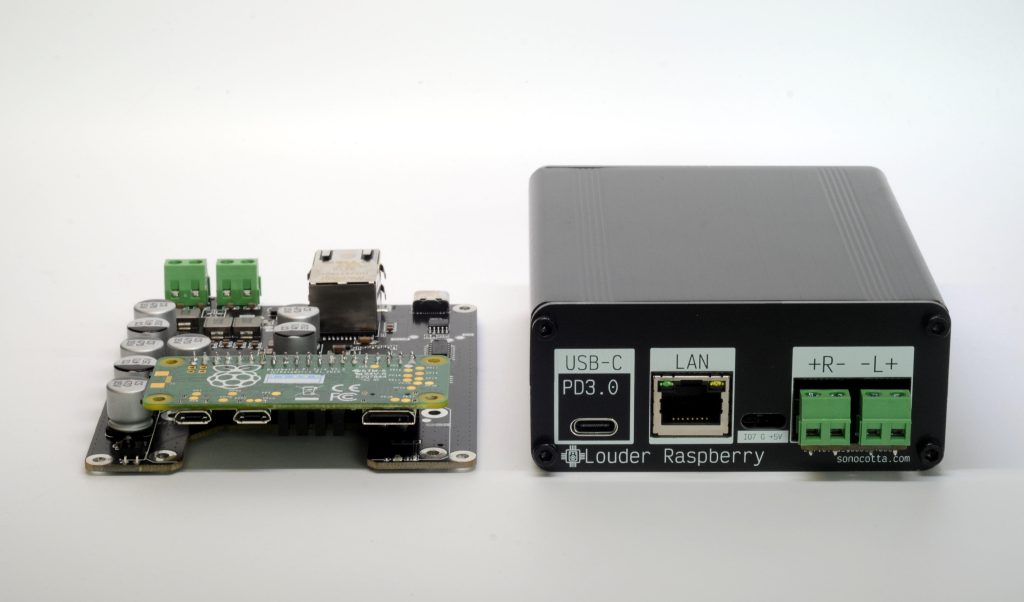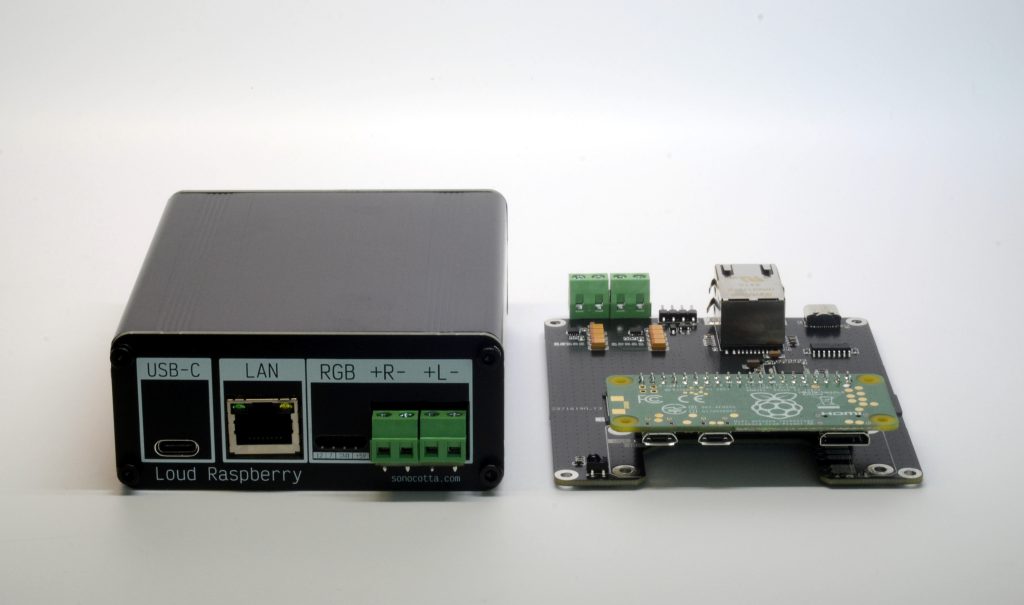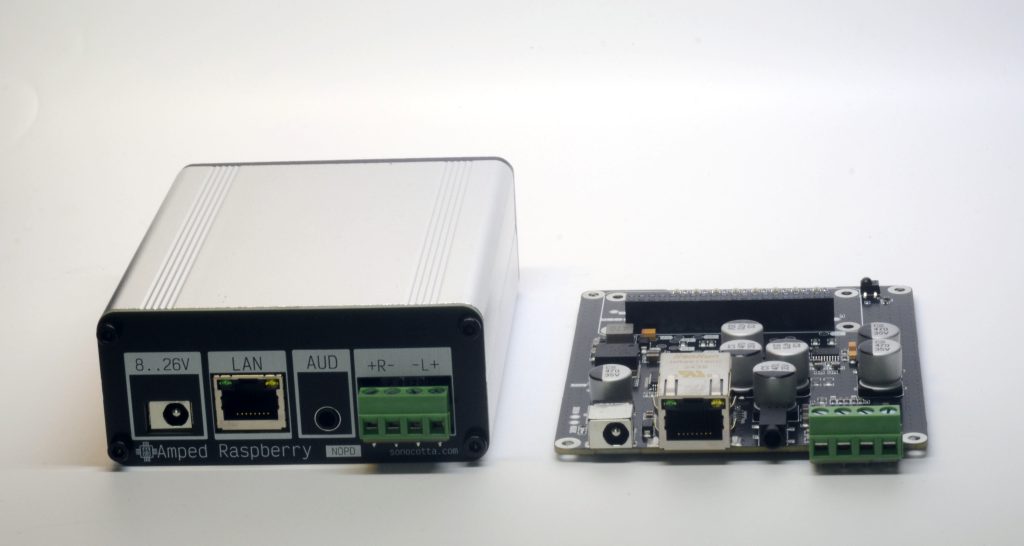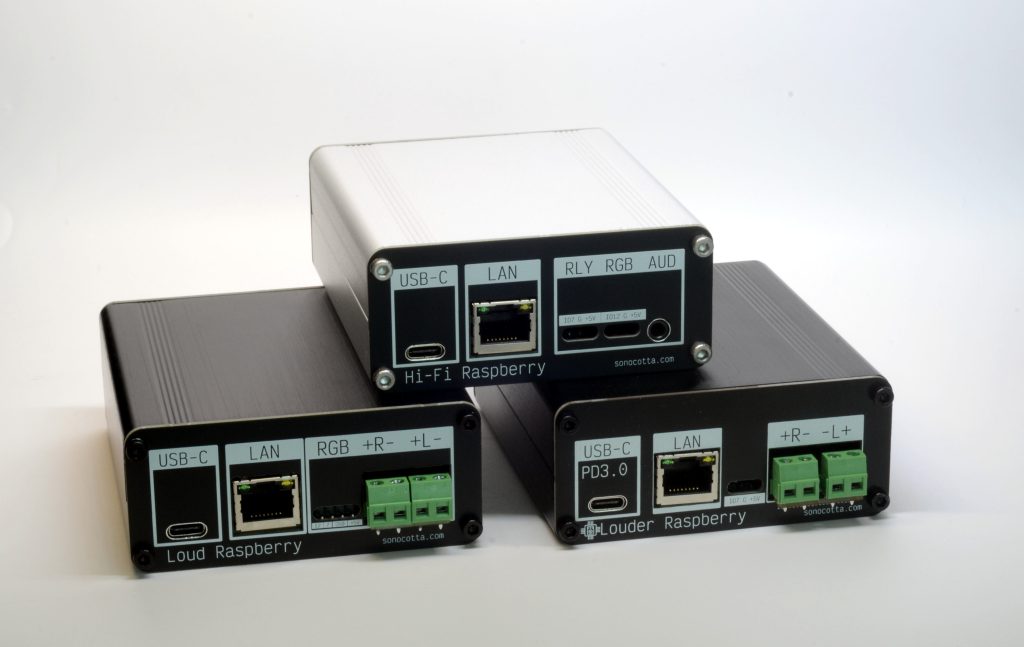
What is it?
The Raspberry Pi Home Media Center is a series of compact and neatly designed hardware projects that combine the power of the Raspberry Pi Zero board and the Hi-Fi DAC.
The HiFi version of the board uses the capabilities of the TI’s PCM5100 32-bit DAC with line-level output, while the Louder version is based on TAS5805M with a stereo amplifier delivering 20W per channel.
This versatile media center provides a customizable and fully open-source hardware platform for home entertainment.
With a minimalistic but functional design inspired by commercial audio gear, it offers a seamless user experience. It aimed to support Volumio, Mopidy, or any custom firmware you may come up with.
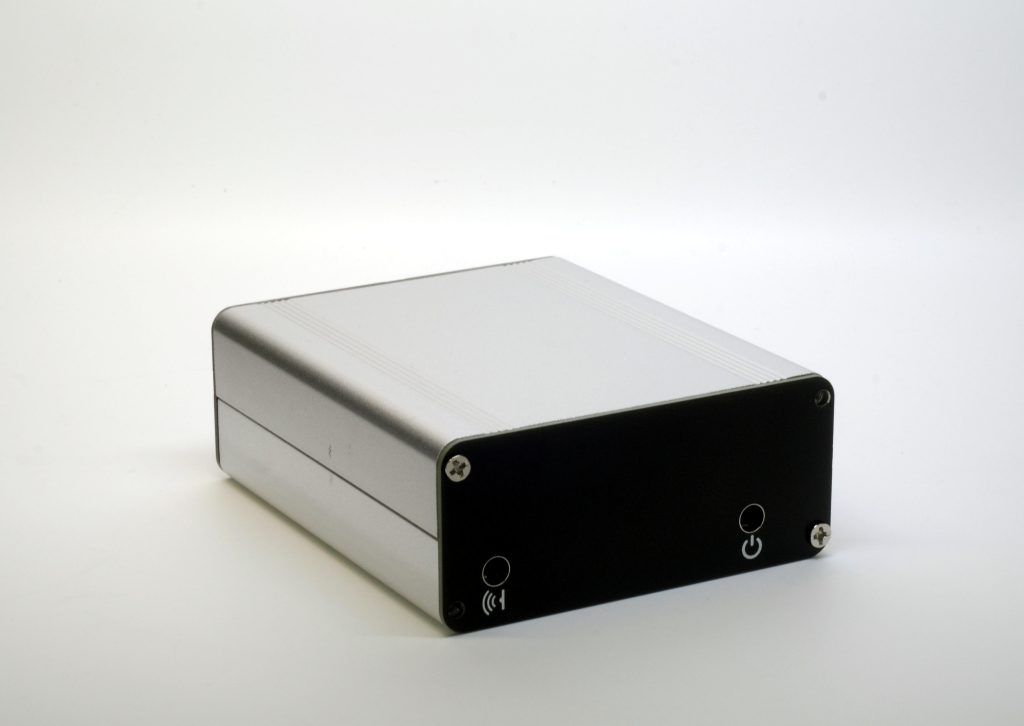
Why did I build it
Initially, I created a line of OrangePi-based devices (Hi-Fi version, followed by Amped version) focusing on the hardware platforms that were available for purchase. Lately, when the chip shortage era is mostly behind us, I’m switching my focus back to the most popular DIY hardware platform to allow a truly seamless and rewarding experience building a media center.
At this point, I’m adding a set of peripherals that I’d use myself on a daily basis (In fact I do). Including IR reader of remote controls and an optional external RGB LED bar.
Why Raspberry Pi?
Community support for Raspberry’s line of products is beyond any expectation. Kernel support, necessary drivers, device tree maps, and going all the way down to media center Linux distributions – it is all out there.
HiFi Raspberry
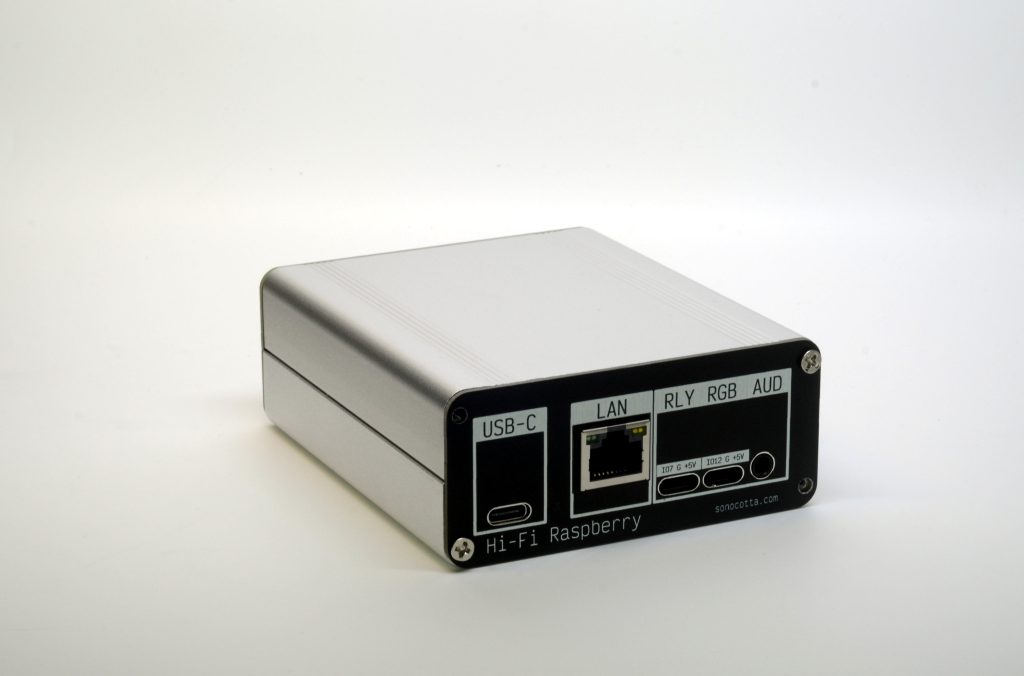
- PCM5100A 32bit Stereo DAC
- 2.1 VRMS Line level output
- 100 dB typical noise level
- Triple LP5907 3.3 V Ultra-Low-Noise LDO
- Wiznet W5500 SPI Ethernet
- 5V USB-C power adapter
- Mechanical dimensions (WxHxD): 88mm x 38mm x 100mm
Amped Raspberry
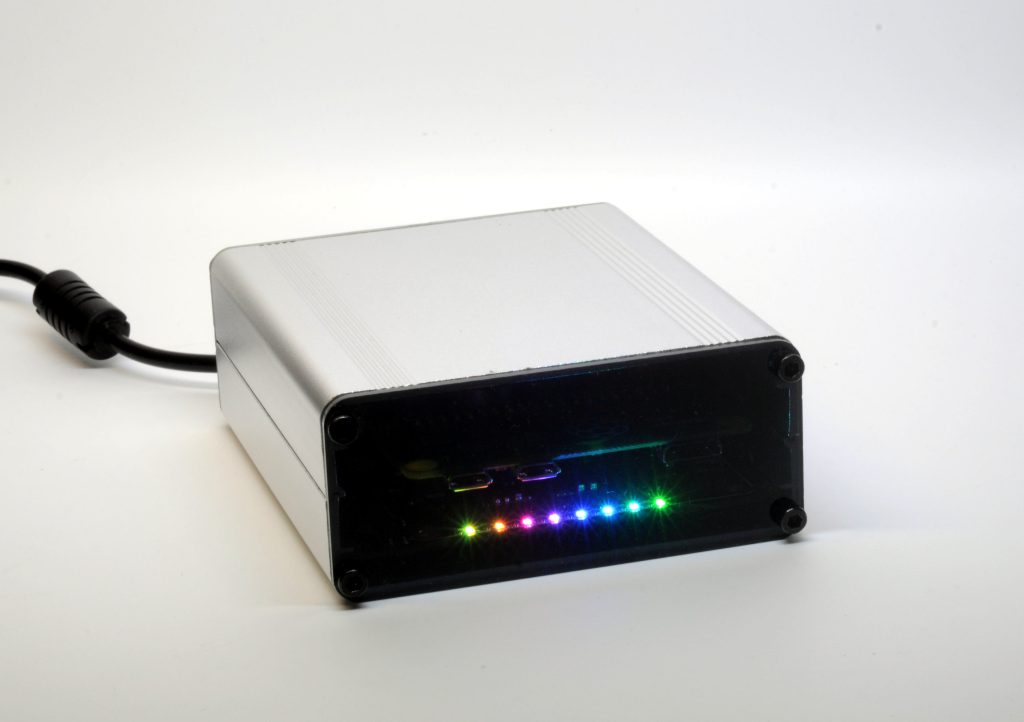
- PCM5100A 32bit Stereo DAC
- 2.1 VRMS Line-level output
- LP5907 3.3 V Ultra-Low-Noise LDO
- 100 dB typical noise level
- TPA3110 D-class Stereo Amp
- 2x 25W (8Ω, 1% THD+N) at 22V
- 2x 22W (4Ω, 1% THD+N) at 16V
- 1x 40W (4Ω, 1% THD+N) at 20
- Wiznet W5500 SPI Ethernet
- 65W USB-C PD power adapter or 8..26V external power source
- Mechanical dimensions (WxHxD): 88mm x 38mm x 100mm
Loud Raspberry

- Dual I2S MAX98357 DAC with built-in D-Class amp
- 5W per channel on 4 Ohm load (3W on 8 Ohms)
- Up to 92% efficiency
- Dual screw-terminal speaker output
- 5V 3A wall power adapter requirement
- Mechanical dimensions (WxHxD): 128mm x 44mm x 100mm
Louder Raspberry
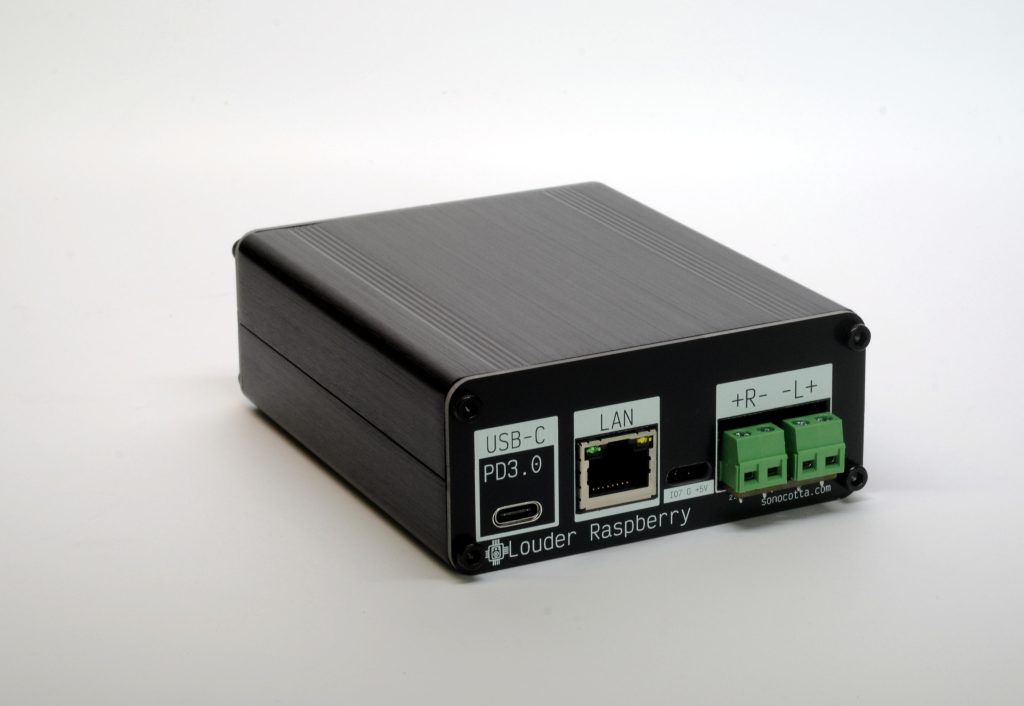
- TAS5805M 32bit Stereo DAC
- 2x 22W at 20V input
- Wiznet W5500 SPI Ethernet
- 65W USB-C PD power adapter or 7..26V external power source
- Mechanical dimensions (WxHxD): 88mm x 38mm x 100mm
How to use
Both software and hardware documentation can be found on the project’s Github. You can follow project progress at Hackaday
Raspberry Pi runs Armbian, Volumio, and Mopidy, but before any of them can use PCM5100 DAC, it needs to be configured.
Setting up an external DAC is as simple as enabling a built-in overlay. Adding ethernet is again a single line with a W5500 overlay.
The Louder version of the board was configured with the help of sister repo
Where to buy
You may support our work by ordering this product at Tindie
Raspberry Pi HiFi Media Center and Hats
Amped Raspberry Media Center and Hats
Loud Raspberry Pi Media Center and Hats
Louder Raspberry Pi Media Center and Hats

